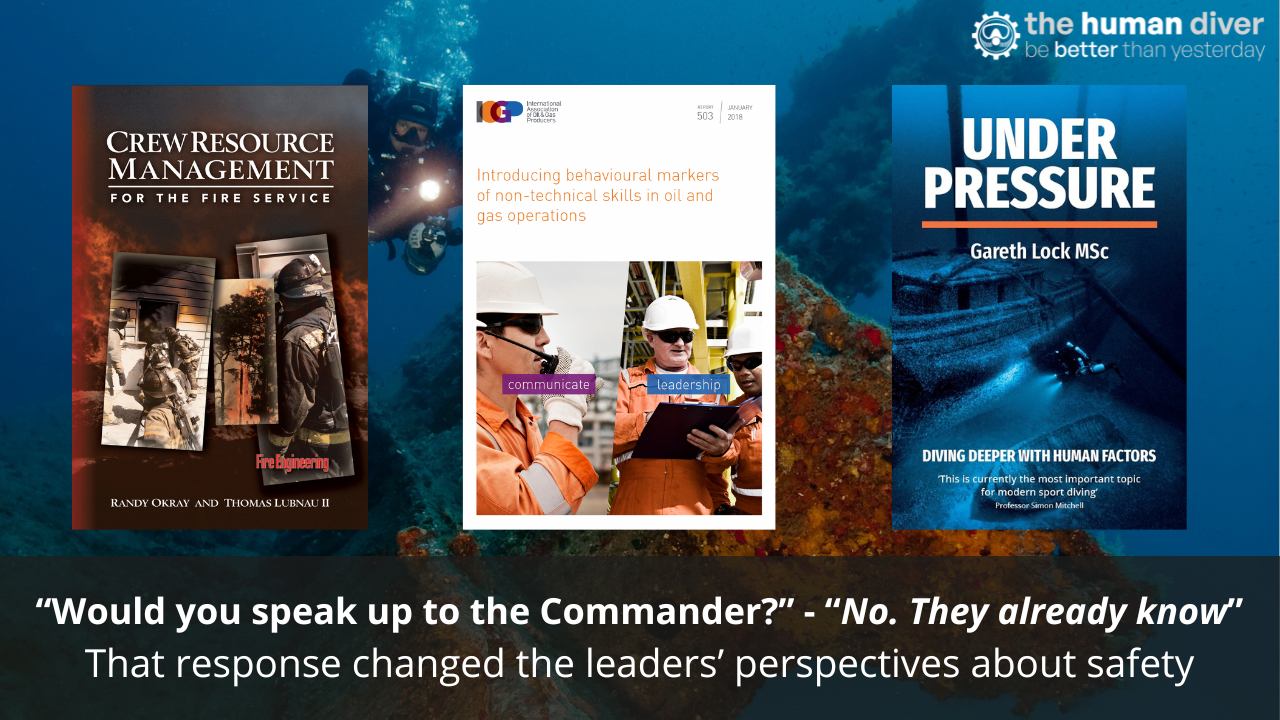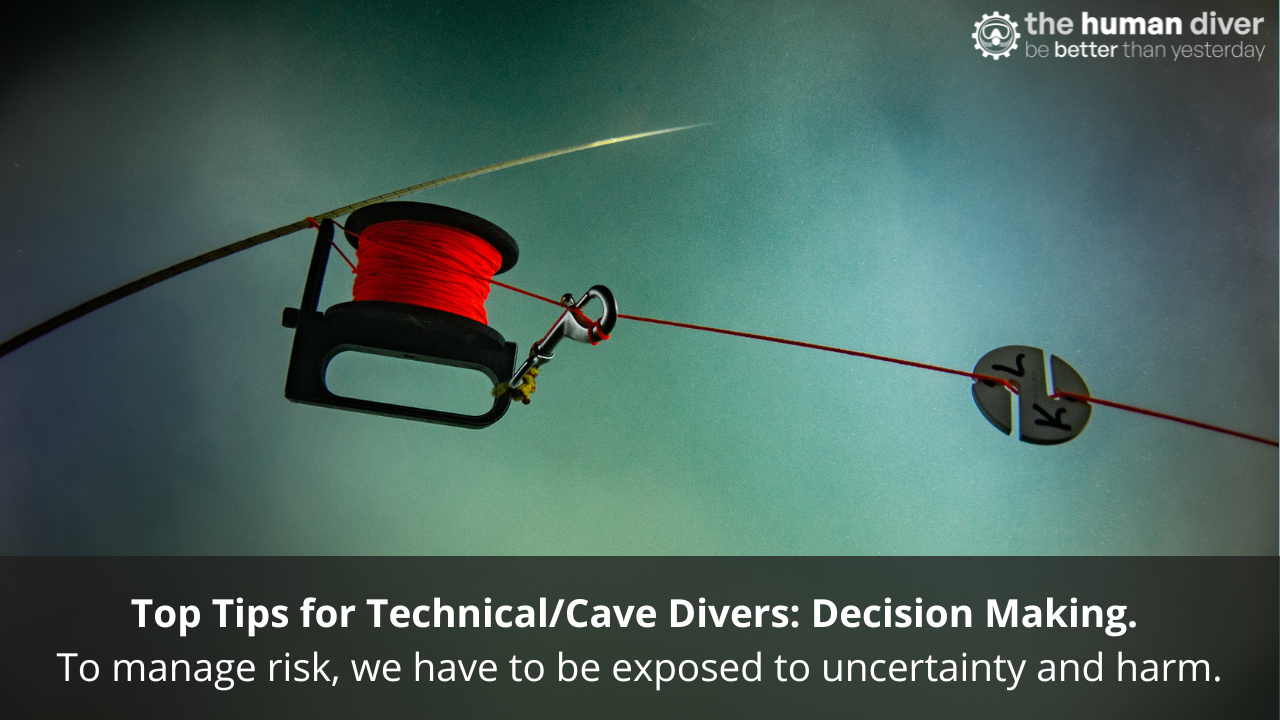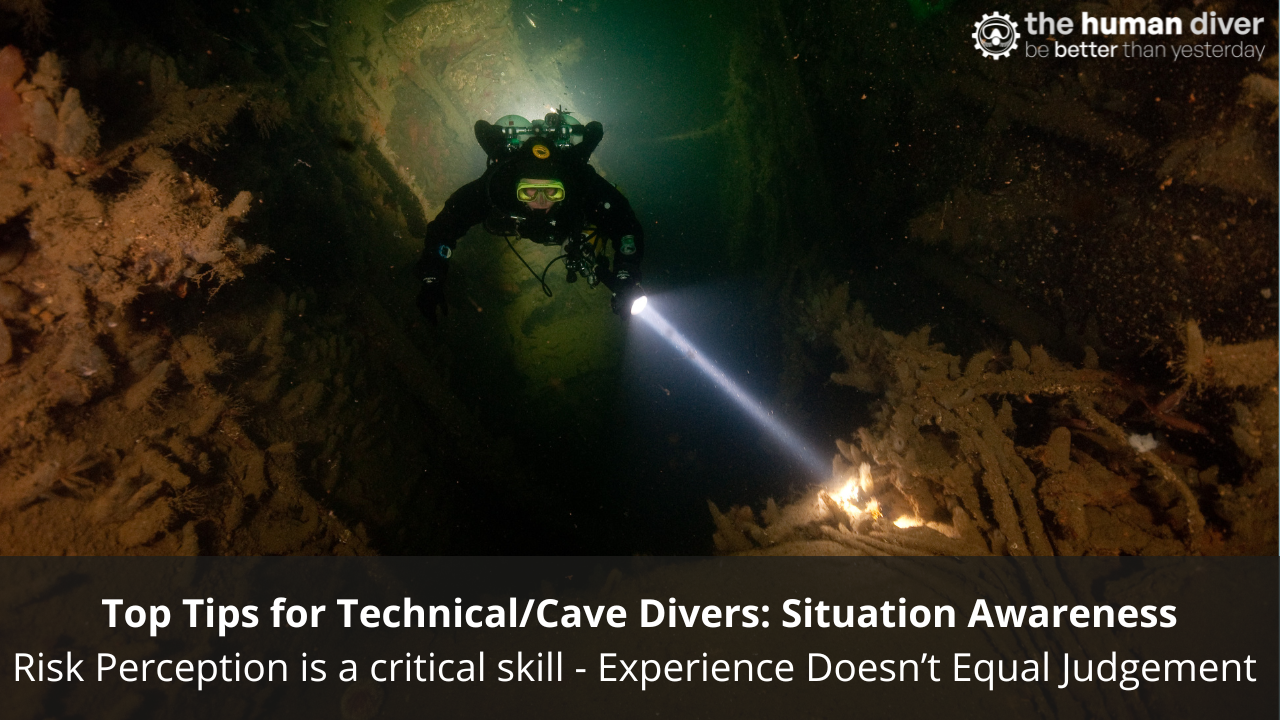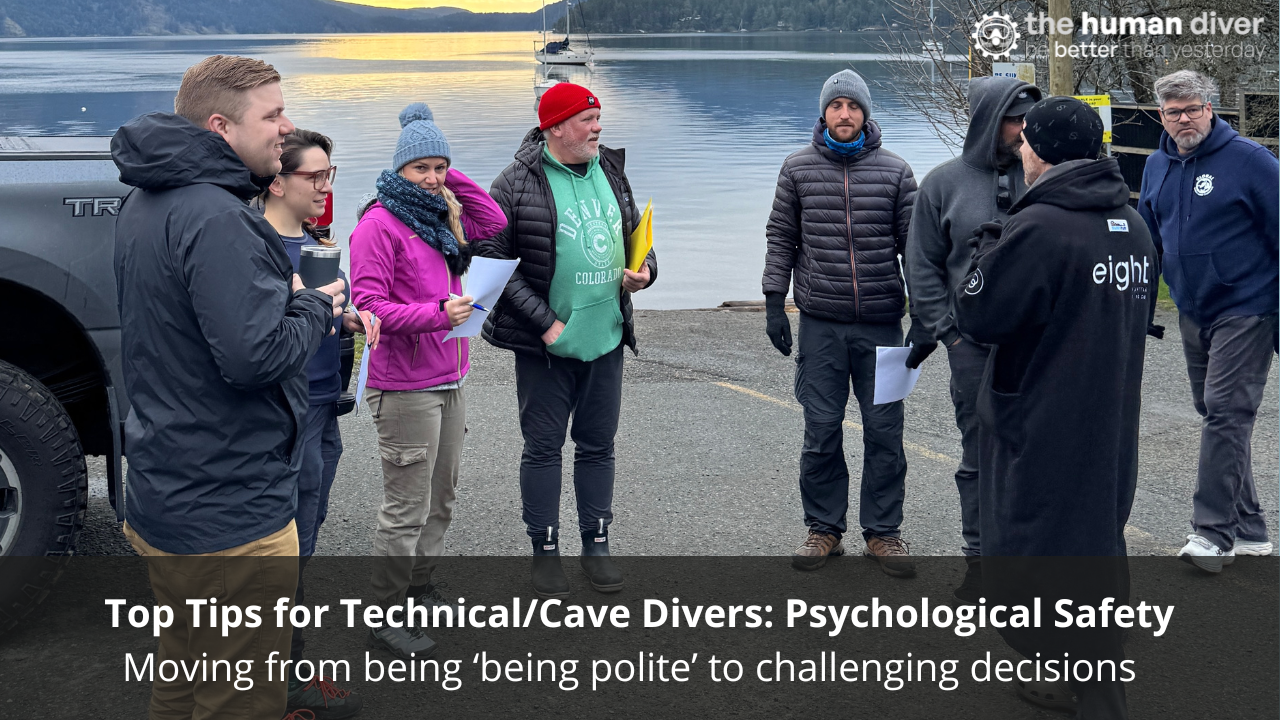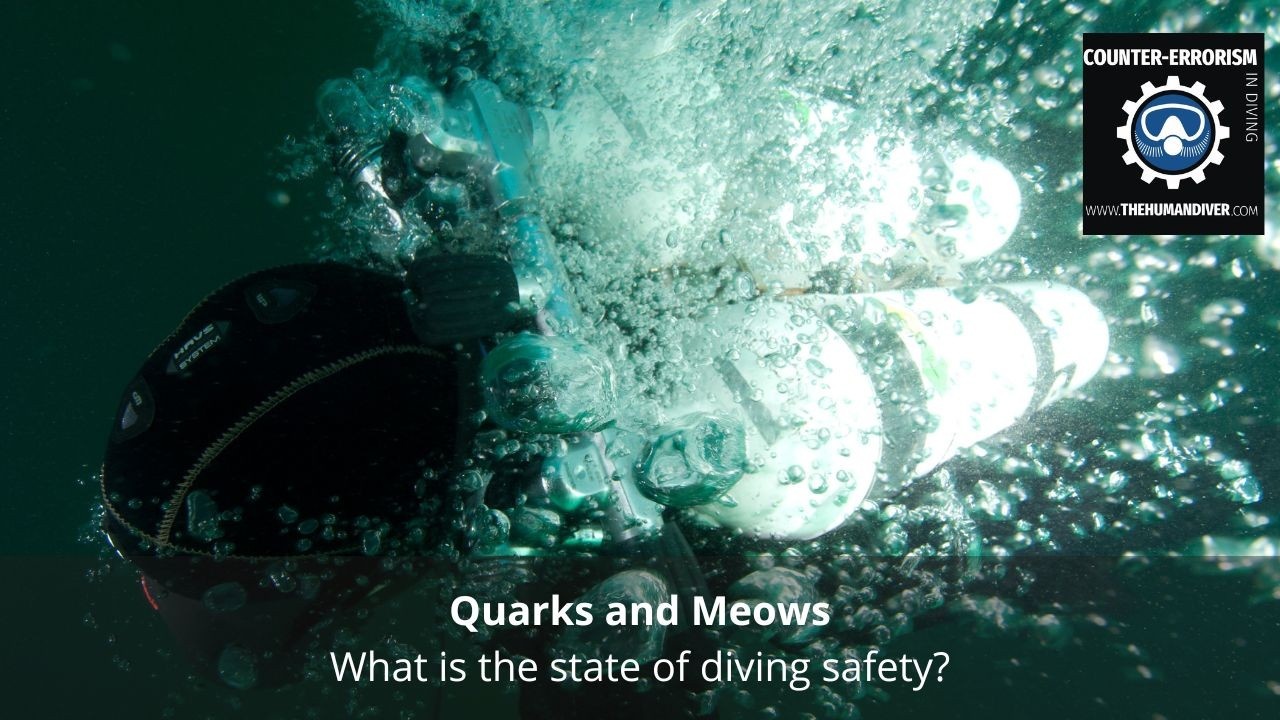
Quarks and Meows - the state of diving safety!
Jun 18, 2022This particular blog is not intended to give you a simple answer to a complex problem, rather it is to encourage you to think about how you consider safety in diving, how you achieve it, and how the industry and communities help maintain it.
The questions to consider are:
- Can you be safe and unsafe at the same time?
- How do you define safety? Do you consider it to be the absence of bad outcomes, or rather the presence of knowledge, skills and attitudes that work towards reducing the likelihood of accidents/incidents from happening, and mitigating their effects when they do?
Safety can be thought of as one part of the interdependent interactions we have within our environment:
- People. This includes our diving team and buddies, our students, our instructors, our skippers, and our agency staff.
- Technology. This includes all of the physical equipment we use to sustain life while underwater and manage the risks of decompression sickness, hyperoxia, hypoxia and hypercapnia.
- Processes & Procedures. This includes the training manuals, the instructional guides, the dive plans, the dive briefs and the post-dive/class debriefs.
- Culture. The unwritten rules and statements that influence us to behave the way we do at the individual, team, organisational, regional and national levels.
These four elements make up a socio-technical system. That could be a simple and linear system where cause and effect are obvious, or a complex and adaptive one where we are constantly balancing the resources we have, in the time we have, against the risks we believe are credible, making sense of each individual situation as it develops, to produce goals that are both implied and explicit.

Safety is about compliance
Organisationally, legally, and potentially socially, safety can be thought of as designing a diving system. This system extends from the level of ISO committees and the World Recreational Training Scuba Training Council all the way down to the individual diver, so that divers, instructors and agency staff are compliant with rules, processes, and regulations. This approach leads us to consider a system ‘has safety’ and safety occurs when people follow the rules. If they follow the rules, bad things won't happen. Unfortunately, there are numerous case studies where compliance doesn't mean that those involved were 'safe'.
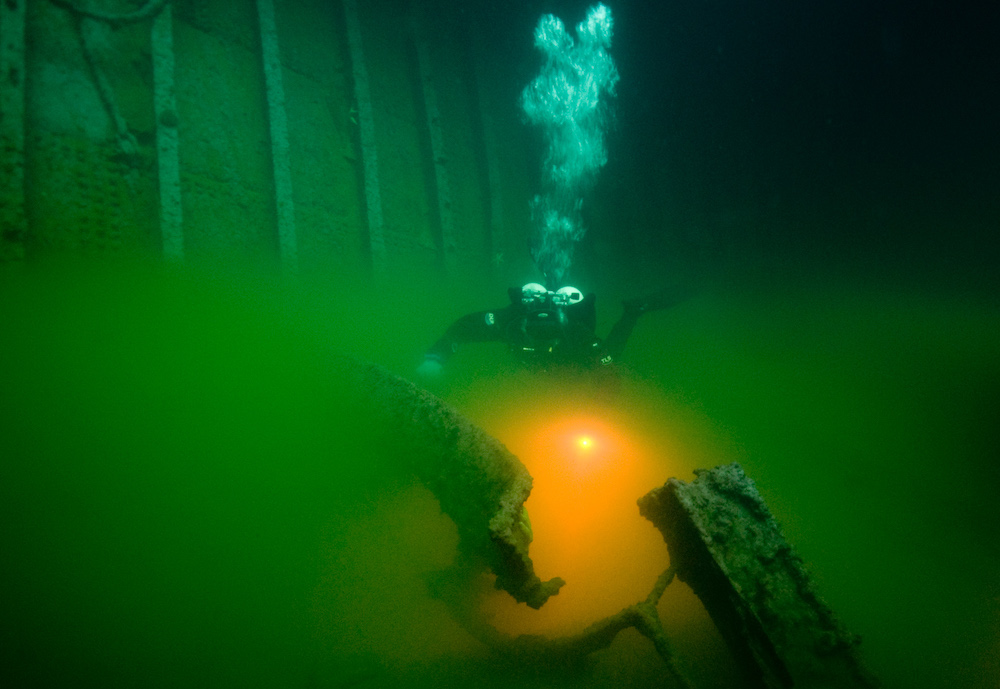
Safety is a dynamic non-event
Or, safety can be the dynamic, adaptive behaviours which maintain the fine balance between systemic failures caused by a lack of resource/manpower, financial viability, and unsafe diving operations. If we, or our team, dive centre, or training organisations don't have enough money, we can't dive or fail. If we don't have enough time or people, the dive or tasks won't get done. Finally, if we cross the 'safety' boundary, we have an accident. The problem is that the most efficient and cost-effective output is right on the boundary of unacceptable performance (an accident), a boundary which is not known until the individuals, team or organisation steps over it and an accident occurs. This approach is where an individual, a team, a dive centre or an organisation ‘does safety’. Safety is a 'dynamic non-event' (Weick & Sutcliffe). More goes right than wrong because people are working hard to prevent bad things from happening.
Which end of the telescope?
Finally, depending on which end of the telescope you are viewing the scene from, and the goals/rewards which are in place at each end, risk and safety can be different to different stakeholders e.g., “Slipping and falling on the ice, for example, is a game for young children, but a potentially fatal accident for an old person.” (Adams, Risk, 1995) or using cognitive biases and heuristics to exit a cave when silted out and the line is no longer available (Steve Bogaerts, Under Pressure, 2019). Consequently, safety and risk can mean very different things to different people because of their individual and/or group perceptions, and their relevant knowledge of the activity. The problem is that individuals undertaking voluntary risky activities have been shown to accept risks 1000 times greater than involuntary hazards (Slovic, Perception of Risk, 1987).

Well, what is the answer?
The simple answer to can you be safe and unsafe at the same time is yes because it depends on how you are viewing the situation. A bit like quantum theory - you can't see the state of a particle until you view it, but when you view it, the state changes! Another analogy is Schrödinger's cat - you don't know if the cat is alive or dead until you look inside the box! Hindsight allows us to look back and determine the state of safety, but in real-time, it is always unknown given what might happen next.
Diving is an activity that takes place in an inherently hazardous environment - we are not capable of surviving for more than a few minutes underwater without technical support. It can be 'safe', it is also risky. How much risk you are willing to tolerate is based on your previous experiences, your training, your knowledge and your perceptions of the risks/rewards that are present, and what you are doing to learn more all the time to manage your understanding of the situation.
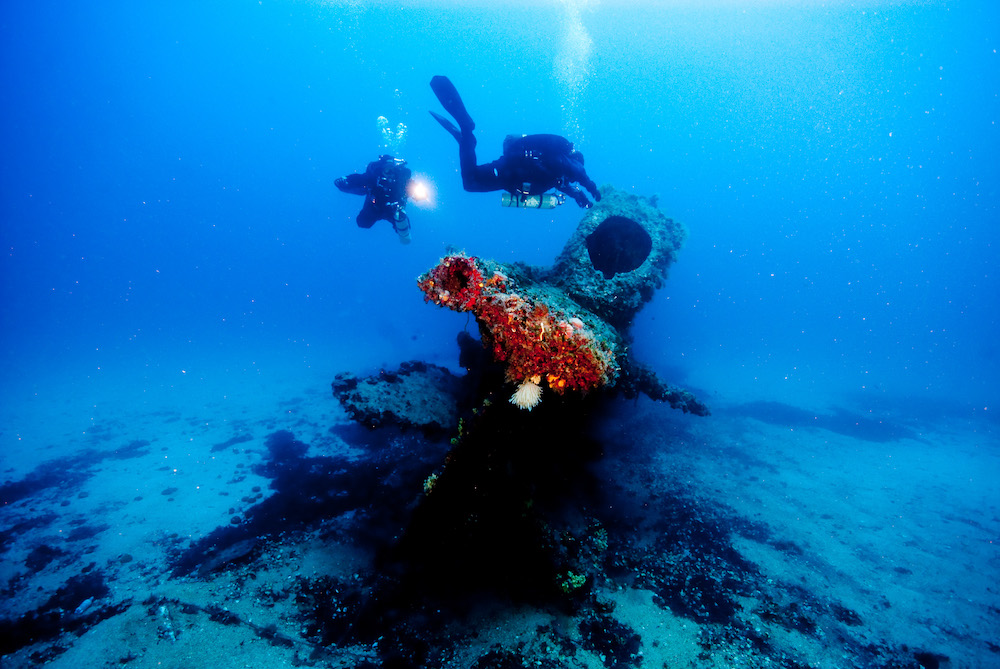
Summary
What is 'safe' is an arbitrary value based on the social environment we are part of and the lens we are viewing the world through. Dive centres and training agencies need to manage levels of safety for a number of reasons: morals & ethics, commercial viability and reputational risk, and protecting themselves from litigation. Individual divers are, in the main, willing to accept greater risks because they are often looking at the rewards (depth, time, wrecks, photos, videos, cave penetration etc) in an emotional manner and do not consider the risks or uncertainties in a more logical frame. This is not unexpected - most of the decisions we take are not logical or measured, rather they are biased and emotional! We also don't want to make diving so 'safe' that it is boring - uncertainty creates excitement.
How you manage your own diving safety is your own problem for you to solve. Just remember that everyone is "borrowing from safety" to achieve the goals and rewards they are looking to achieve (Anthony Smoker). High-reliability teams and organisations recognise that failure is always just one step away and have a 'chronic unease' towards failure. Consequently, they work extremely hard to ensure that their operators have the skills and knowledge to both reduce the likelihood a team or individual steps over the accident line, but, that they can also recover from the situation without catastrophic consequences.
One of my favourite quotes on this comes from Todd Conklin, "Safety is not just the absence of accidents and incidents, but rather the presence of barriers and defences, and the capacity of the system to fail safely."
When was the last time you practised dealing with a difficult scenario like recovering someone from depth and getting them onto the boat/shore? How valid are the assumptions that you make when it comes to managing risk? When was the last time you developed your knowledge to help identify and solve problems before they materialised? High-reliability organisations are learning organisations too!

Gareth Lock is the owner of The Human Diver, a niche company focused on educating and developing divers, instructors and related teams to be high-performing. If you'd like to deepen your diving experience, consider taking the online introduction course which will change your attitude towards diving because safety is your perception, visit the website.
Want to learn more about this article or have questions? Contact us.


